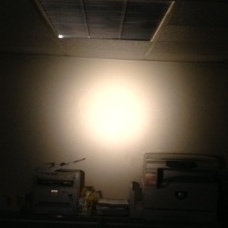Warm Tint And White Tint FAQ
About Warm Tint 90-CRI LEDs
Many customers has inquired about the difference between the common white tinted LEDs that are used in flashlights and the Warm Tint 90-CRI LEDs that we carry. We would like to give some information here for our customers, so they have a more clearer understanding about these Warm Tint LEDs.
What is CRI?
CRI is Colour Rendering Index.
It is a quantitative measure of the ability of a light source to reproduce the colours of various objects faithfully in comparison with an ideal or natural light source. Light sources with a high CRI are desirable in colour-critical applications such as photography and cinematography.
It is a quantitative measure of the ability of a light source to reproduce the colours of various objects faithfully in comparison with an ideal or natural light source. Light sources with a high CRI are desirable in colour-critical applications such as photography and cinematography.
Incandescent lamps have a CRI of 100 which is the highest.
Most white tinted LEDs have a CRI of 65-70.
The Warm Tint 90-CRI LEDs lineup we carry have a CRI of 90, which is the highest available for LEDs.
Most white tinted LEDs have a CRI of 65-70.
The Warm Tint 90-CRI LEDs lineup we carry have a CRI of 90, which is the highest available for LEDs.
The higher the CRI, the better you can see the “true” colour of the object that you are using your flashlight to see.
This is very vital for Law Enforcement, tactical, searching, and outdoor applications.
This is very vital for Law Enforcement, tactical, searching, and outdoor applications.
Warm Tint?
The Warm Tint also means that the colour temperature is lower then the White tinted LEDs.
Most White Tinted LEDs have a colour temperature of 5000 to 8000K
The Warm Tinted LEDs have a colour temperature of typically 2700 to 3700 K, this is the range of Incandescent lamps. It is easier to the eyes as most of us are used to this range.
The Warm Tinted LEDs have a colour temperature of typically 2700 to 3700 K, this is the range of Incandescent lamps. It is easier to the eyes as most of us are used to this range.
In short, the benefits are:
-
Better on applications where the colour of the object lighted up is important since the colour will be reproduced more faithfully.
-
Warmer tints are easier for the eyes and for users that is used to the colours of Incandescent lighting.
-
Less reflection
-
Better visibility under bad weather conditions, such as rain, snow, fog, smoke.
So if it is this much better then normal White tinted LEDs, why do you still carry the White tinted LEDs?
Well, although Warm Tint LEDs are in many ways superior then the normal White Tinted LEDs, there are 3 reasons as to why people like the White Tinted LEDs.
-
Many users like the higher colour temperature of the White Tinted LEDs, it is very white and can give an impression that it is brighter.
-
It is uneasy to the eyes due to the high colour temperature, so it is good on applications when the user want to “blind” the target.
-
The “Bin” available on White LEDs are usually higher then the “Bin” available for Warm Tinted LEDs, so White LEDs can have a higher lumens per watt. Although it is just 5-15 lumens that the naked eye can never distinguish, some users like to have the bragging rights.

Incandescent Beamshot

Warm Tint LED Beamshot

Neutral White Beamshot




